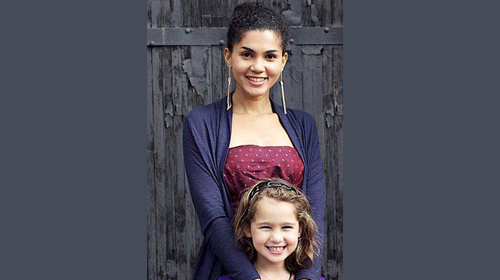
Elizabeth "Tizzy" Lockman lives with her daughter, Sophie, in the same Wilmington, Del., house where Tizzy grew up. She had hoped to send her daughter to the same elementary school she attended as a little girl, but soon discovered that the school she knew in the 1980s had changed dramatically.
Where a racially and economically diverse student body once streamed through the hallways of Lewis Elementary, the school had become nearly 100 percent Hispanic by 2008. This wasn't a problem limited to just one school in the Red Clay Consolidated School District. Across town, what had been the top school in the city, Warner Elementary, was now at the very lowest end of the economic spectrum, with a population that was almost entirely Black.
"I was shocked by how much things had changed," says Tizzy, a media producer and self-described "school reform activist" who is active in school organizations and serves on the board of the ACLU's Delaware affiliate. "I was looking for a school with some socioeconomic balance and realized that not only did it not exist in the city, but it was reversed in the suburbs: heavily white and higher income."
The demographic shift from mixed to monocultural is taking place all across America. Known as "resegregation," the phenomenon has been traced to several coexisting factors: the emergence of the "majority-minority" population; a gradual release from desegregation court orders; the increase in income inequality, which leads to fewer middle-class and socioeconomically diverse neighborhoods; and the rise of charter schools.
"At first, I had a positive opinion about charters," Tizzy says. "They seemed to be trying to maintain a socioeconomic balance. But I'm now a skeptic, because a lot of the charters here have gone in the direction of a suburban school makeup — less racial, ethnic, and economic diversity, and not many special-education students."
She feels charter schools have had a negative effect on the educational landscape in Wilmington because they siphon off families at a higher income level, which puts the public schools at a disadvantage. "Our school, Highlands Elementary, is racially diverse, but there's been a steady rise in poverty. Now middle-class and higher-income families are leaving — and they were the ones advocating most strongly for the school," she explains. With fewer assets at their disposal, such schools must confront budget cuts and hiring constraints, compounding the issue further.
"Our educational system has degraded to the point that there are better school options out there, but the available spots are limited. We're incentivized to step on other people to get those spots, rather than trying to create a larger, more equitable system for everyone," says Tizzy.
The effect, however unintentional, is one of resegregation. "We're taking steps to empower parents – and that's good, even though it's within the confines of 'school choice' – but I think we're missing a big part of the promise of the Brown decision," says Tizzy.
"We've completely lost the part of the conversation that deals with the intangible benefits of being in contact with people who are not like you, and how isolation and stigma can have an impact on all sides," she observes.
"We keep chasing our tails about what will make schools better, and we're missing that 'togetherness' aspect. Until we address that, we'll never really fulfill Brown's potential."
Learn more about racial justice and other civil liberty issues: Sign up for breaking news alerts, follow us on Twitter, and like us on Facebook.




